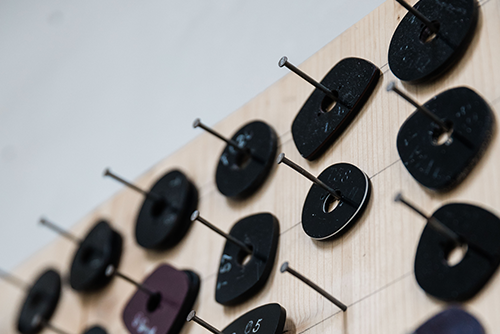WWMO: HOW BIO IS BIO ACETATE?
As designers, it's our responsibility to make items with longevity, repairability and end-of-life in mind. A big part of this is our choice of materials - more than simply what our products are made of, they reflect what we are made of too.

Over the coming months, we’ll be breaking them down, one by one, empowering you with facts, highlighting the pros and cons, and explaining where we plan to go with them in the future in our new series aptly named, ‘What We’re Made Of’.
We're starting off with the material that makes up 90% of our eyewear - bio acetate.

Bio Acetate is a cellulose-based bioplastic
A bit of an oxymoron, bioplastics are hybrid materials made with cellulose polymers fully or partially derived from natural and renewable materials. The level of bio content, the biodegradability and the compostability of these bioplastics can all vary, and with a market value estimated to reach $45.72 billion by 2030, it’s extremely important to know all the details surrounding these materials, as you’ll be encountering more and more over the coming years.

Regular Acetate, the beautiful, malleable and versatile material used for most eyewear, is a bioplastic too. It was the material we used for our first few frames, but in 2018, we discovered something better… Mazzucchelli’s M49 (bio acetate).

So what’s the difference?
M49 is composed of 68% plant-based content (28% more than regular acetate) and replaces traditional fossil fuel-based plasticisers with one of vegetable origin. This high level of bio content means that it’s biodegradable & compostability according to the UNI-EN-ISO 17088: 2012 & UNI-EN-ISO 14855-2: 2018 standards, set by the ISO; the leading body setting global standards for trusted goods and services. This means 90% of the mass must biodegrade or compost with 115 days of incubation.

Although these credentials are great, and we believe it to be the best bio-based option available when it comes to performance and material composition, we think it's important not to overinflate the truth. It won’t disappear that quickly if left to naturally biodegrade, and it isn’t made entirely from plants. It requires industrial composting, which isn’t a responsibility we can put on our customers, nor is it something that is easily accessible, even for those within the eyewear industry.

Instead of relying on this ‘biodegradable’ credential, we’d rather help you keep your frames in circulation for as long as possible, avoiding the need to dispose of them by using repairable design features such as riveted hinges and offering an extensive list of refurbishment services at our Chiltern Street Store.
WHAT’S NEXT?
In 2020 Mazzucchelli partnered with Eastman to patent Acetate Renew, an acetate made with a 28% recycled content, 42% standard cellulose acetate, and 30% traditional plasticiser. In 2022, it became commercially available, and they are now pushing the innovation forward to replace the standard cellulose acetate with bio acetate, taking the total bio content up to an impressive 92% (although the availability of this updated material is not yet confirmed).
We’ve given this potential material a lot of thought, but with the Eastman facilities based in the USA, there are currently barriers to exporting our waste there, as well as a larger discussion on impact to take into consideration.
Being honest about this process is important to us, and we’ll never stop our search for better materials. For now, we’re looking for a solution closer to home.
We’re excited to see where material innovation takes the eyewear industry over the coming years, and we hope to always offer you the best we can, ever improving our product and reducing our impact.


